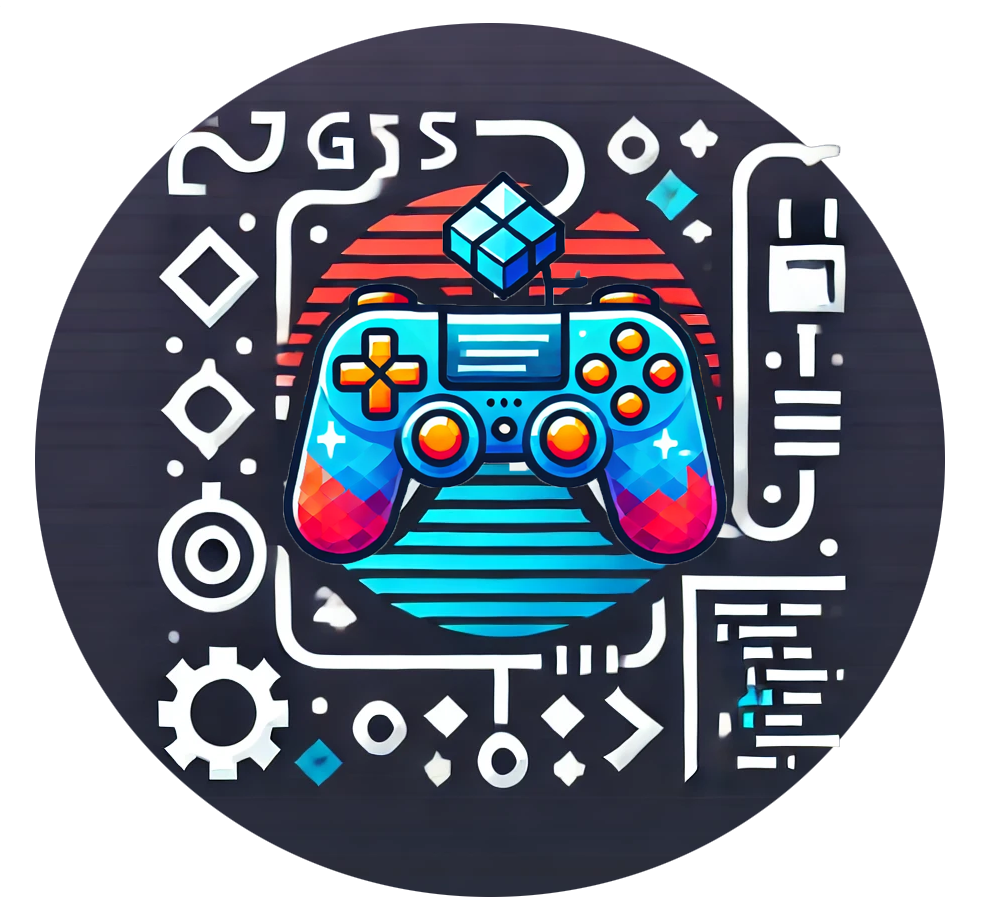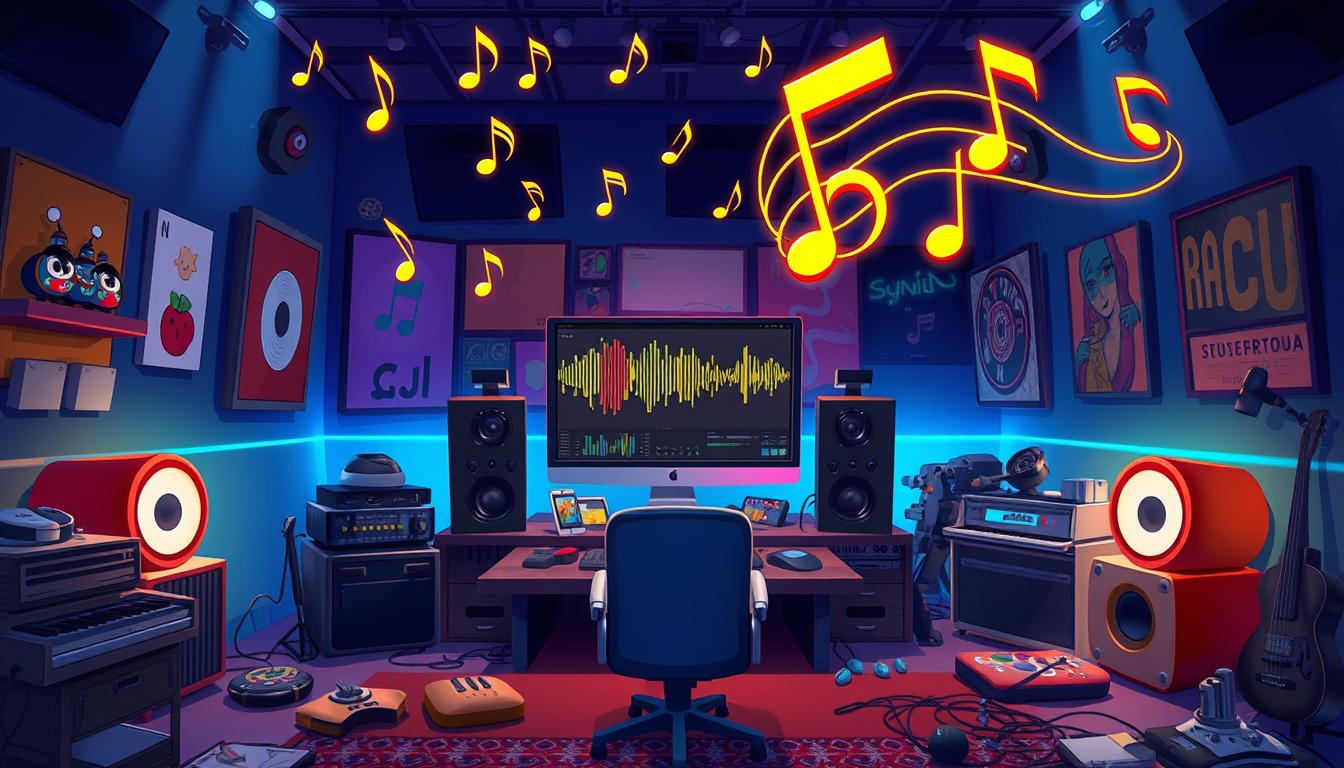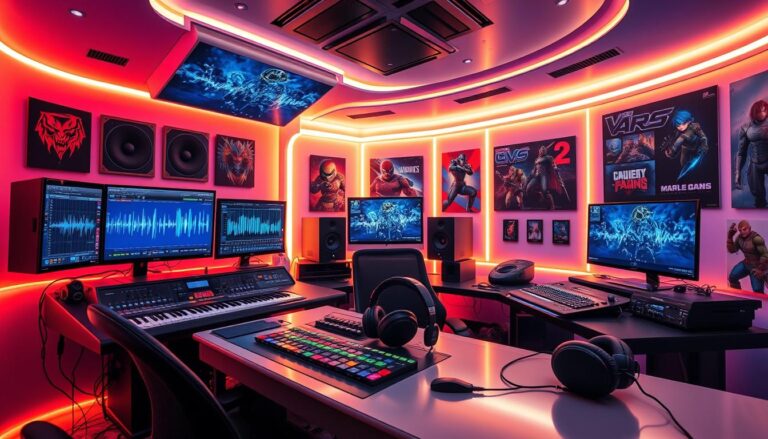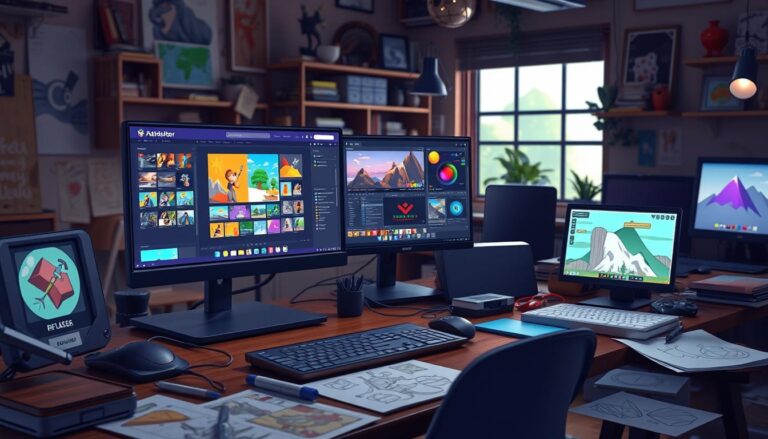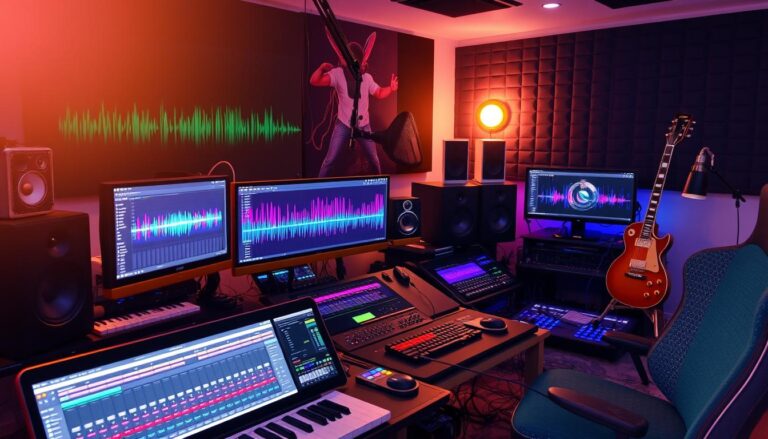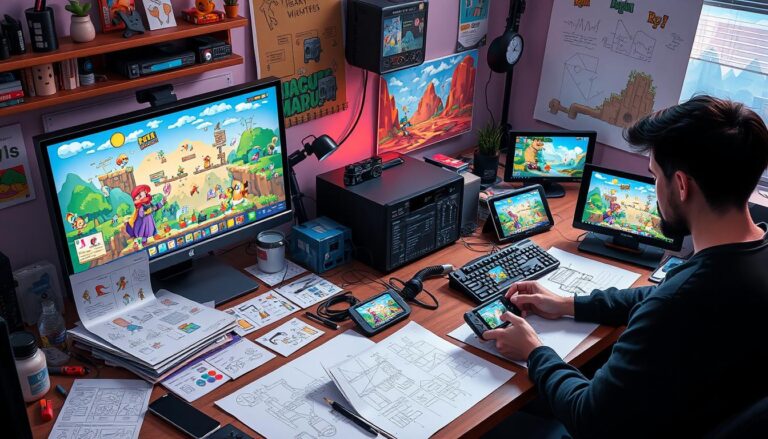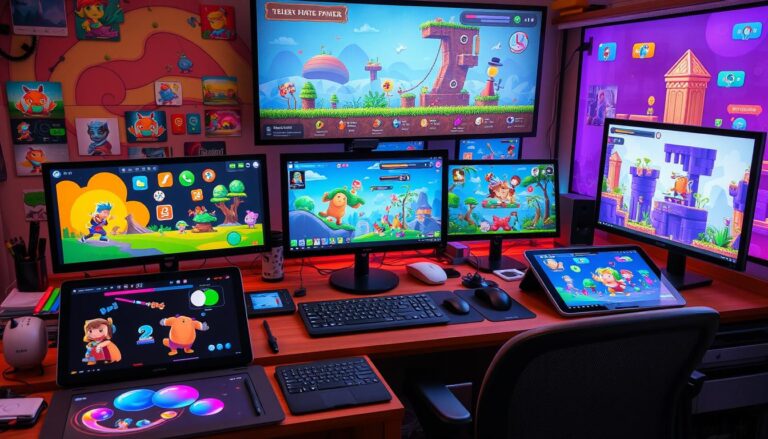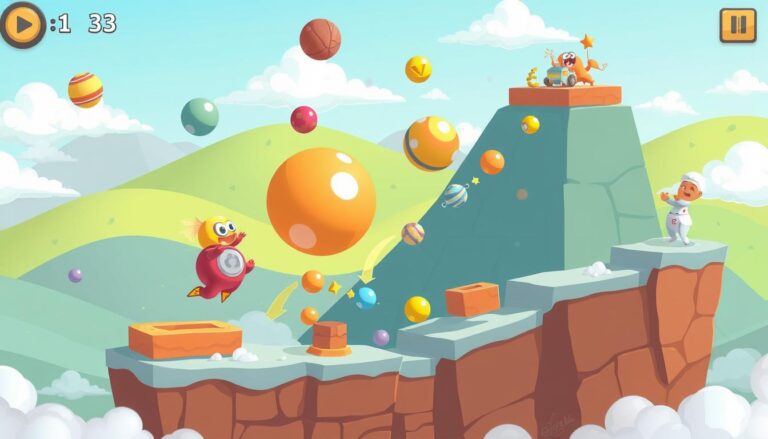What Is the Process for Adding Music and Sound Effects to 2D Games?
Adding music and sound effects to 2D games is key to making them engaging. These elements bring games to life, making them more fun and immersive. They help set the mood and highlight important moments in the game.
This section will look at how to add music and sound effects to 2D games. We’ll cover why audio is important, the different parts of sound design, and how developers use technology to add these elements. By understanding audio’s role and how to use it well, game makers can create more engaging and enjoyable games.
Understanding the Role of Audio in 2D Game Development
Audio is key in making 2D games better. It sets the mood and adds feelings, pulling players into the game. Every sound, from music to voices, makes the game more real.
Impact on Player Experience and Immersion
Most gamers, about 83%, say sound is crucial. Sounds warn of dangers, help solve puzzles, and tell stories. In big games, sounds help players know where they are.
Types of Game Audio Elements
- Background music: Sets the mood and adds feelings to the game.
- Sound effects: Give players feedback and make the game feel real.
- Character voices: Make characters come alive and add to the story.
- Ambient sounds: Make players feel like they’re really there.
Importance of Audio Timing and Synchronization
Getting audio right is key. Sounds like laser beams and explosions make games better. When done well, it makes the game more fun and real.
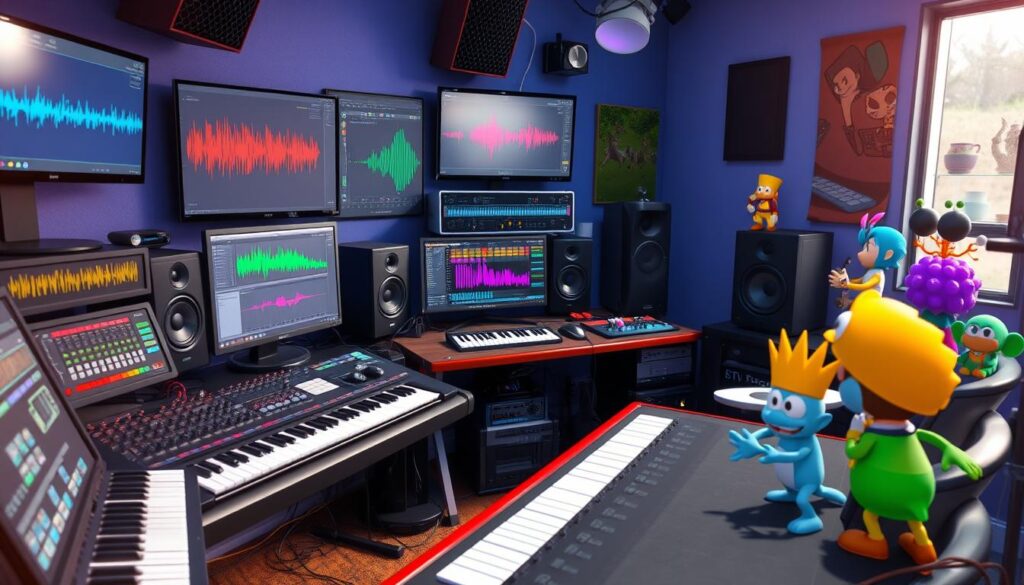
Even though 2D games often ignore surround sound, it can make games stand out. Good audio makes games more enjoyable.
Essential Components of Game Sound Design
Game sound design is all about creating an immersive audio experience. It includes background music, sound effects for characters and actions, and feedback for the user interface. These elements work together to make the game more engaging.
Background Music and Ambiance
The background music and ambient sounds set the mood and atmosphere of a game. They help evoke emotions and enhance immersion. Choosing the right music and sounds ensures the game’s audio fits perfectly with its visuals and story.
Character and Action Sound Effects
Sound effects for characters and actions give players instant feedback. They make the game feel more real and engaging. Good sound design in this area makes every action feel satisfying and enjoyable.
User Interface Audio Feedback
User interface audio feedback is crucial for guiding players. It includes sounds for menu interactions and button presses. Consistent and clear UI audio makes navigating the game easier and more fun.
Tile Mapping, Level Design, and Asset Management are key to game development. They work with sound design to create a complete gaming experience. By focusing on these areas, developers can make their 2D games more captivating and high-quality.
Technical Implementation in 2D Game Development
Adding audio to 2D games means mixing sound effects and music into the game engine. It’s important to know the game’s screen size and aspect ratio. This can differ from the usual 480 x 360 dimensions seen in platforms like Scratch. Using the RGB color system for audio files is key for correct display and playback.
Game physics is crucial in 2D games. Games like Prince of Persia and Toki Tori use static tiles for obstacles. On the other hand, games like Super Mario World and Sonic the Hedgehog use tilemaps for smoother movements and features like slopes.
Good collision detection is vital in 2D games. Games with slopes, like Mega Man X, require careful movement adjustments. This ensures a smooth and fun player experience.
Effective input management is also essential. Developers must accurately capture user inputs from keyboards, mice, or gamepads. Understanding the game’s controls and how responsive they need to be is key for a smooth game experience.
| Game Type | Collision Detection | Movement Mechanics |
|---|---|---|
| Tile-based (pure) platforms | Static obstacle information stored in tiles, minimal diagonal movement | Tiles as the primary unit, limited movement options |
| Tile-based (smooth) platforms | Collision determined by tilemap, character sizes range from 1 to 3 tiles tall | Smoother character movements, support for slopes and jump arcs |
Adding audio, game physics, collision detection, and input management to 2D games needs a deep understanding. Knowing the game engine, platform, and game genre mechanics is crucial. This way, developers can make 2D games that are both immersive and engaging.
Tools and Software for Game Audio Production
Game audio production needs many tools and software. These help create, record, and mix music and sound effects. The game world uses various technologies to make audio that pulls players in.
Digital Audio Workstations (DAWs)
DAWs like Pro Tools, Logic Pro, and Ableton Live are key for game audio makers. They let composers and sound designers work on music and audio. DAWs help manage and add audio to Game Engines smoothly.
Sound Effect Libraries and Resources
The game audio world has lots of sound effect libraries. Sites like SoundJay, FindSounds, and FreeSound.org offer free sounds. These libraries help make and add audio to games quickly, making Game Engines and Asset Management easier.
Audio Middleware Solutions
Audio middleware like FMOD and Wwise is vital for adding audio to games. They help manage and optimize audio, making sure it plays well with the game. These tools also offer features like dynamic music and 3D audio, improving the game’s sound and feel.
The game world uses many tools for audio production. This shows how important audio is in making games fun and real. With these technologies, developers can create sounds that grab players and make games more emotional.
Conclusion
Adding music and sound effects to 2D games is key to a great player experience. It makes the game more engaging and immersive. The right audio can enhance the visuals and gameplay.
Background music, ambiance, character sounds, and UI feedback are all important. They make the game more enjoyable and successful.
Creating and adding audio to games requires the right tools and software. Digital audio workstations and sound libraries help developers make amazing audio. This is crucial for a 2D game’s success.
The gaming world is always changing, but 2D games are still loved. They offer a classic and easy-to-play experience. By focusing on sound design, developers can create memorable games that players love.
